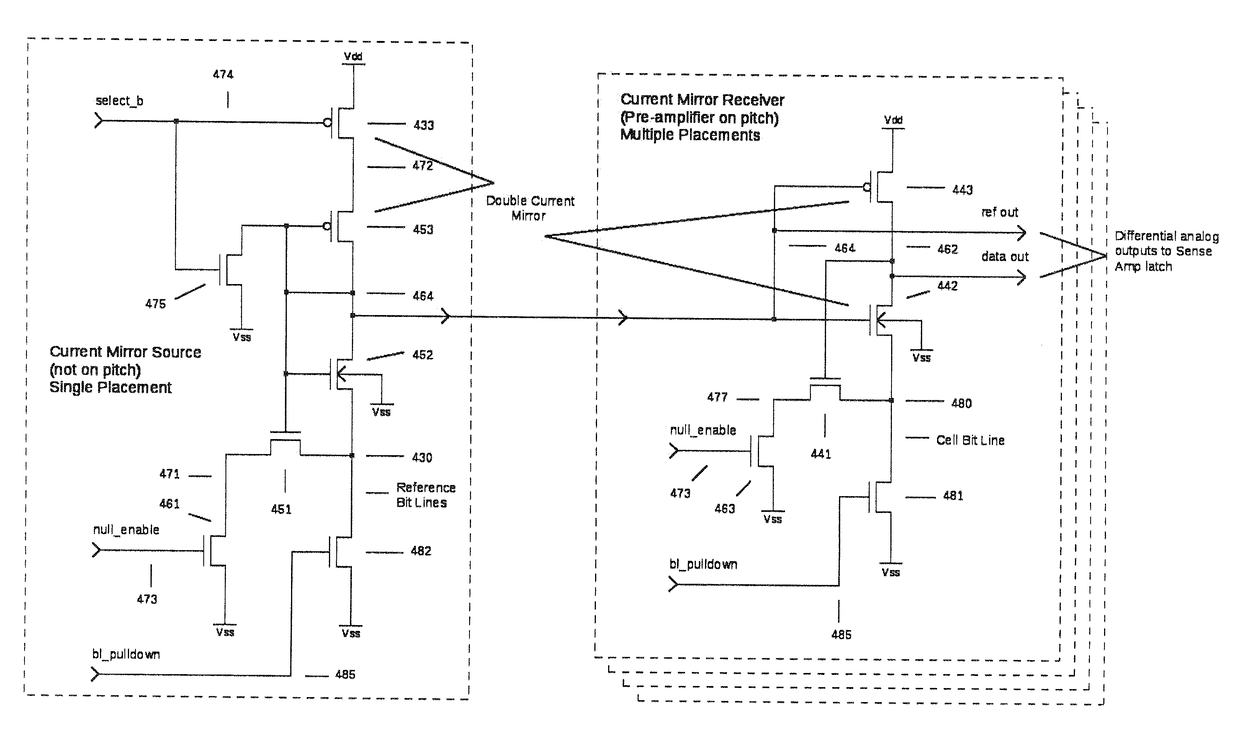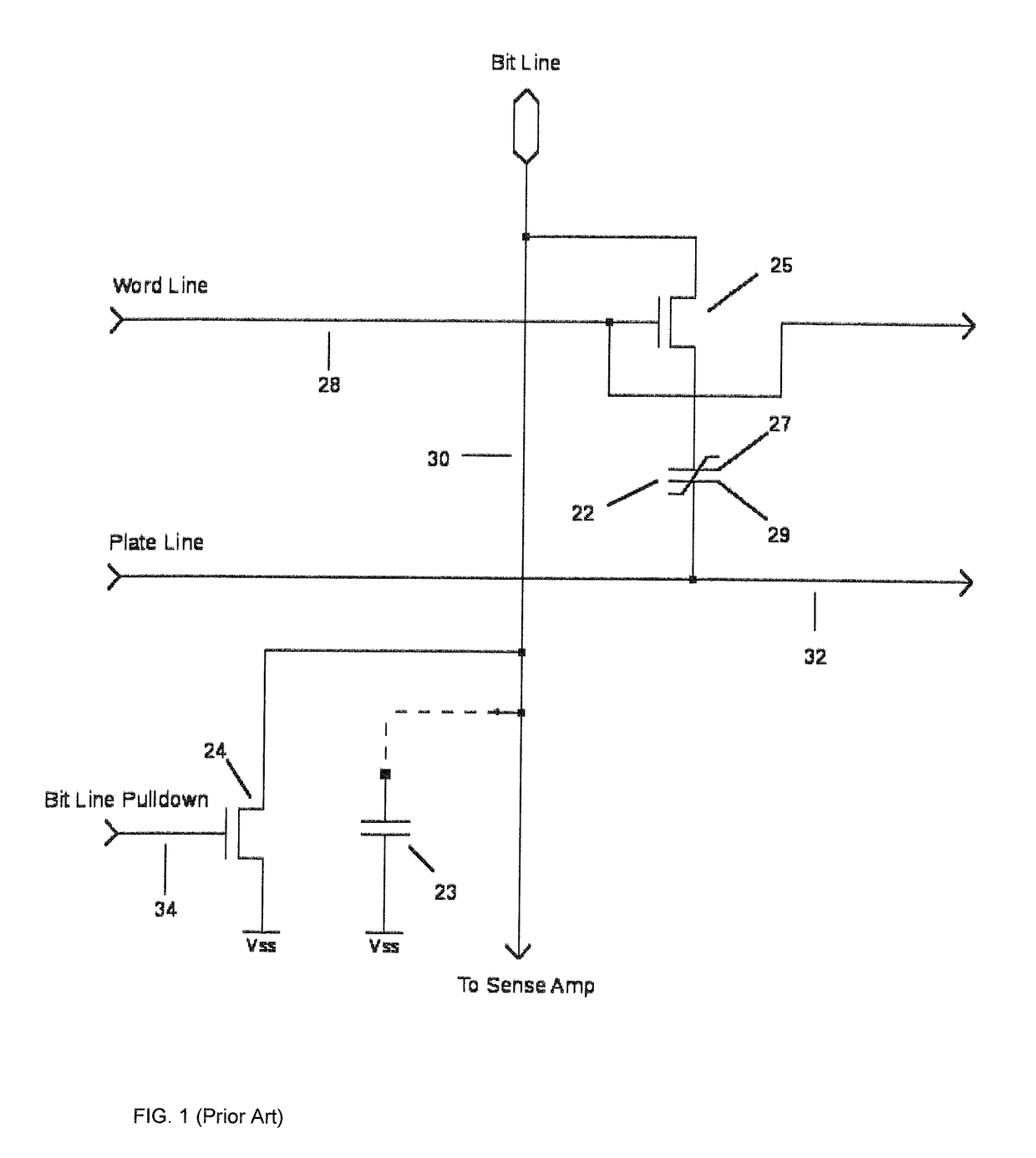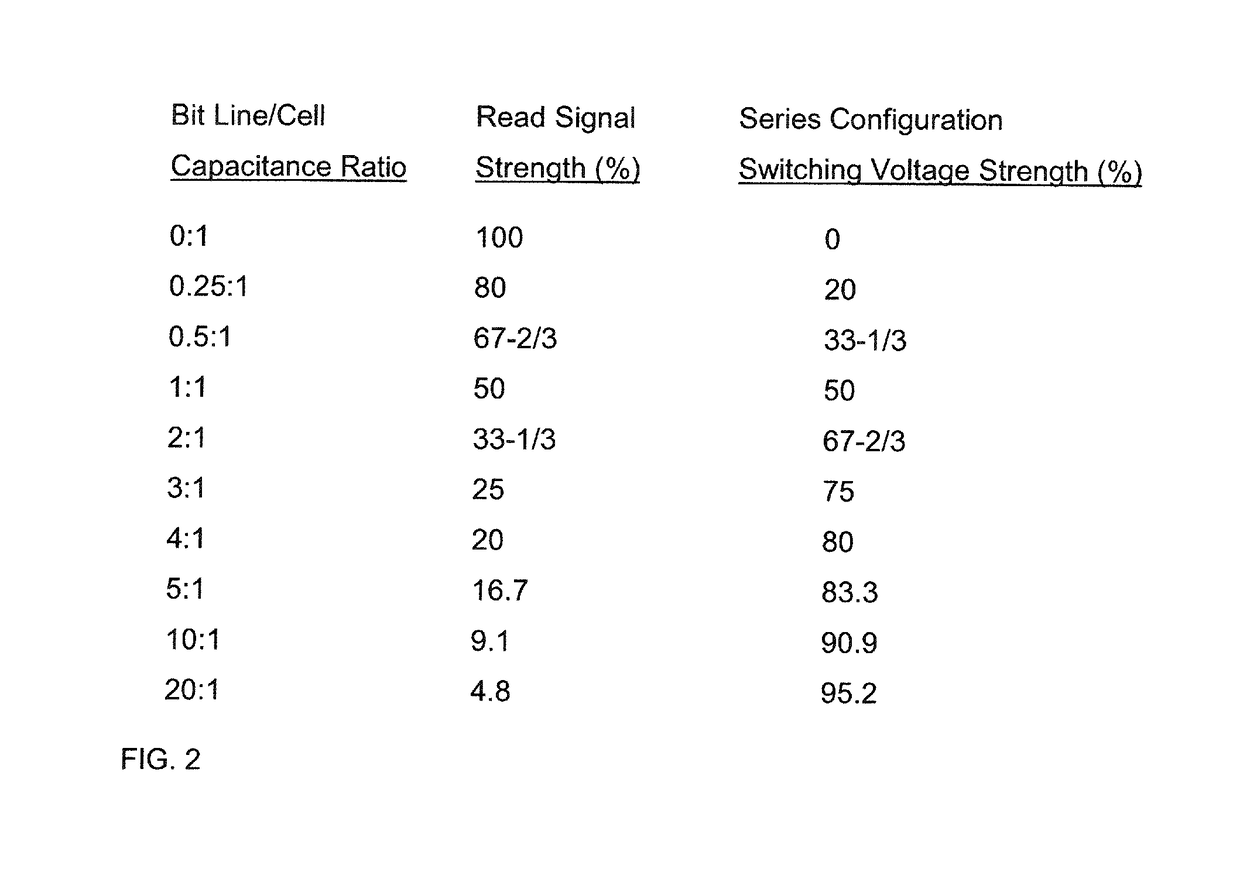Integrated Memory Device and Method of Operating Same
a memory device and integrated circuit technology, applied in information storage, static storage, digital storage, etc., can solve the problems of limiting the ability of these sense amplifiers to reliably detect very small signal differences on bit lines, limiting the smallest memory cell size, and limiting so as to improve the read signal margin, and reliably sense small voltage excursions on bit lines
- Summary
- Abstract
- Description
- Claims
- Application Information
AI Technical Summary
Benefits of technology
Problems solved by technology
Method used
Image
Examples
Embodiment Construction
[0045]In contrast to prior art memories that have used floating bit lines, such as DRAMs and FRAMs, the preferred embodiment of the current invention (1) operates with non-floating bit lines during the sensing portion of the read cycle, (2) uses a self-nulling differential preamplifier that applies additional charge to non-floating bit lines to eliminate offset in the preamplifier so that small data signals on bit lines can be sensed, (3) uses a latching sense amplifier connected to the outputs of the preamplifier in order to latch the data, and (4) uses a reference memory cell design based on the current invention to provide a reference signal for the preamplifier.
[0046]An alternate embodiment of the current invention for an FRAM (1) operates with non-floating bit lines during the sensing portion of the read cycle, (2) applies additional charge to the bit lines during the sensing portion of the read cycle, and (3) uses a reference memory cell design based on the current invention t...
PUM
 Login to View More
Login to View More Abstract
Description
Claims
Application Information
 Login to View More
Login to View More - R&D
- Intellectual Property
- Life Sciences
- Materials
- Tech Scout
- Unparalleled Data Quality
- Higher Quality Content
- 60% Fewer Hallucinations
Browse by: Latest US Patents, China's latest patents, Technical Efficacy Thesaurus, Application Domain, Technology Topic, Popular Technical Reports.
© 2025 PatSnap. All rights reserved.Legal|Privacy policy|Modern Slavery Act Transparency Statement|Sitemap|About US| Contact US: help@patsnap.com



